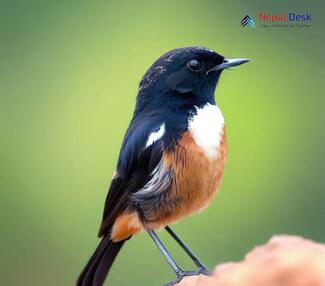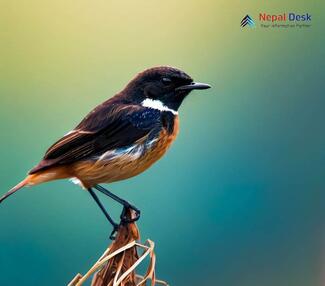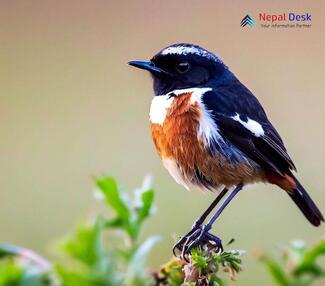Let's uncover the mysteries of the lesser-known yet intriguing White-throated Bushchat (Saxicola insignis). This delightful bird species resides in different parts of Asia, including Nepal. In this article, we'll explore its classification, appearance, where it lives, what it eats, and how it breeds and nests. So join us as we unfold the captivating world of the White-throated Bushchat.
Classification and Appearance
The White-throated Bushchat is a member of the Muscicapidae family and Saxicola genus. You might also hear the name Hodgson's Bushchat. The adult male showcases a stunning bright white throat, contrasting black face mask almost enveloping the head, chestnut-brown body, and black wings adorned with white patches. In contrast, females display a more subtle plumage with soft brownish-grey upperparts and buffy-white underparts. Juveniles appear similar to females, but can exhibit minor streaking on their breasts.
Living Quarters and Meals
This fascinating bird favors dry open grasslands, tall grasses or reeds lining riverbanks, and agricultural areas rich in insects. They flourish at altitudes between 1,500 and 3,000 meters above sea level. Their menu consists mainly of insects like beetles, butterflies, moths, crickets, and grasshoppers. To catch their dinner either they pick their prey off plants or masterfully snatch flying insects right out of the air.
Courtship and Nest construction
White-throated Bushchats' love season runs from April to July. During this period, male birds declare their territory by performing captivating aerial stunts with vocal serenades to woo a female mate. Once they find an ideal partner, they stay monogamous throughout the breeding season.
When it comes to nest-building, White-throated Bushchats opt for cozy cup-shaped nests close to the ground in grass clumps or small bushes. Predominantly, the female is in charge of gathering grass stems, plant fibers, and leaves for construction. She carefully lines the inside with soft feathers or similar materials to ensure insulation and comfort for the hatchlings.
Laying between three to six pale blue-green eggs, the female incubates them for about two weeks until they're ready to see the world. After hatching, both parents work together in feeding and nurturing their young until they're capable of flying at roughly two to three weeks old.
Existence in Nepal
The White-throated Bushchat has a modest population distributed across parts of Asia, with a presence in Nepal. In Nepal, you can find this endearing species in places like Jumla, Rara National Park, Annapurna Conservation Area, and Dhorpatan Hunting Reserve. Protection efforts within these areas are crucial for giving this extraordinary bird a chance to prosper and maintain healthy numbers.
As we wrap up, it's easy to see that the White-throated Bushchat is a delightful species marked by its charming looks and intriguing behaviors. Its presence in Nepal and other Asian regions contributes significantly to its diverse fauna ecosystem. By better understanding White-throated Bushchat's habitat requirements and supporting conservation initiatives, we can ensure their continuity for the enjoyment of future bird enthusiasts and nature lovers alike.




